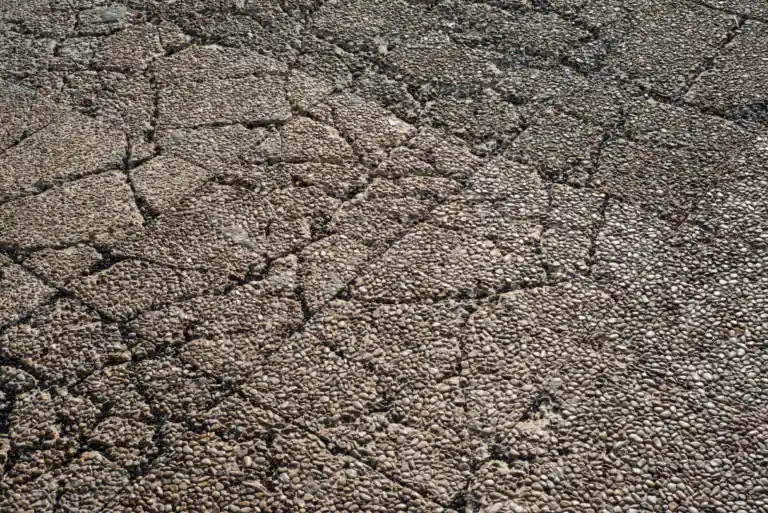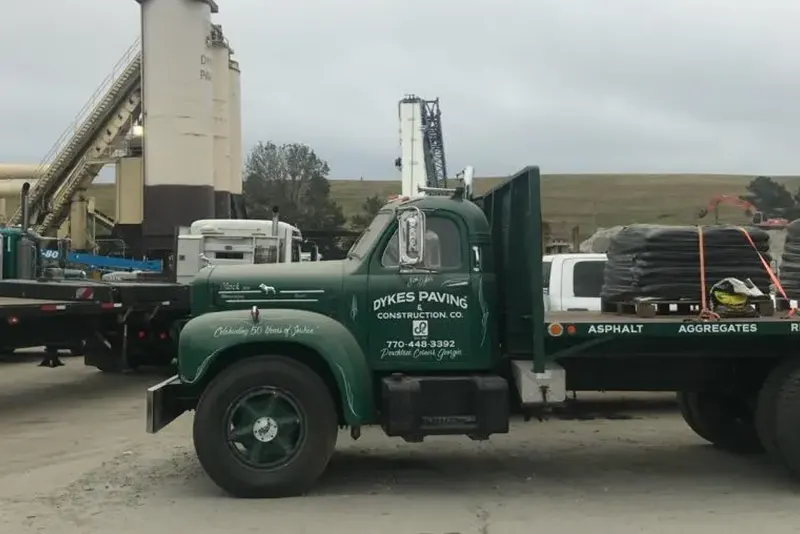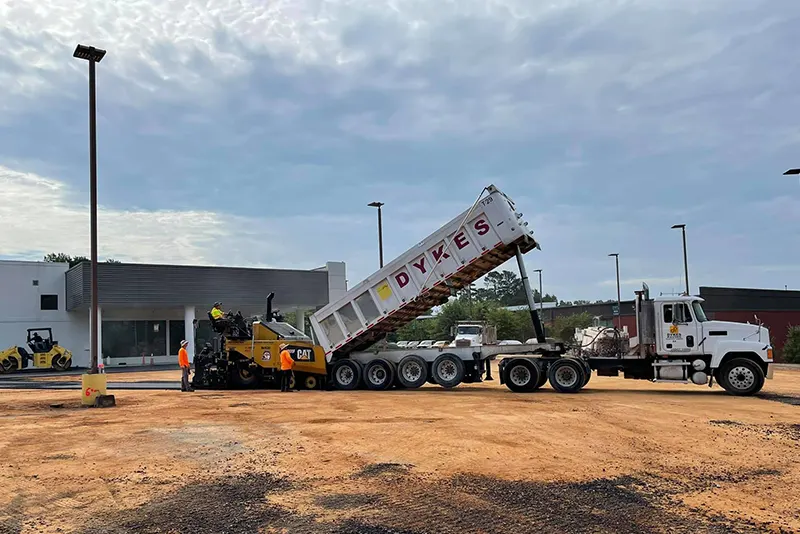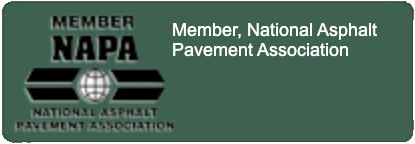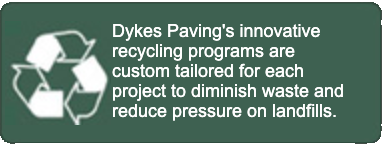Many people think that paving is a fairly simple procedure, that isn’t too involved. This is not the case. Paving contractors must know about all types of substances and how exactly to mix and apply them. Next time you discuss your needs with a paving contractor and they start rattling off lots of foreign vocabularly, the list below should help keep you in the know.
A
accelerators – Material additives used to accelerate, or reduce, the setting time of concrete causing it to harden faster.
aerated concrete – Concrete that is formed using gas-forming admixtures that form hydrogen or oxygen bubbles in the cement mix.
aggregate – A mix of sand, rock, crushed stone, expanded particles that improve the formation and flow of cement paste and improve improve the structural performance of the concrete.
aggregate base – Crushed gravel that is generally added as a foundation for the asphalt pavement.
agitator truck – A vehicle that takes ready-mixed concrete and delivers it (ready to be used) to a construction site. the truck’s bed contains a large barrel, used to continuously roll the concrete mixture – keeping it from solidifying before use.
air content – The volume of air in a concrete or mortar mix. a controlled air content prevents concrete from cracking during the freeze and thaw cycle.
asphalt – A brownish-black solid or semi-solid mixture of bitumens obtained from native deposits, or as a petroleum byproduct, used in paving. As a petroleum by-product, it is a mixture of rock and hot oil at a temperature of about 375 f.
asphalt driveways – Made up of many different environmentally safe products: stone (aggregate), fine stone, asphalt cement, & sand. these are all bonded together by the asphalt cement to form a very strong hot mix, which is usually about 350 f.
asphalt grinding – Used to remove damaged asphalt or to prepare an existing surface for an overlay. The ground asphalt makes for a good base material. It can also be recycled into new asphalt.
asphalt pulverizing – The process of breaking up existing asphalt into an aggregate and blending new aggregate with the existing base – which is compacted, graded, compacted again and is then, ready for paving. pulverizing is a very cost-effective way to reconstruct your existing pavement. This process eliminates the costly excavation and trucking of your existing asphalt, and adds to your base aggregate thickness – thereby giving a stronger base than what had previously existed.
B
ballast – A layer of coarse stone, gravel, slag, etc., over which, concrete is placed.
bedding – A prepared base for masonry or concrete.
bituminous pavement – Made with by-products of petroleum, like as asphalt. Weather and seasonal changes can cause roads and the earth below them to rise or fall slightly. as these natural shifts take place, bituminous pavements allow the road surface to bend or flex a tiny bit, without breaking. These materials soften when heated and can be prepared and applied in a wide range of concentrations.
blanket – Insulation for protecting fresh concrete during curing.
block out – The installation of a box or barrier within a foundation wall to prevent the concrete from entering into an area.
burlap – Material used to protect newly finished concrete from the elements.
C
calcium chloride – An additive in ready-mix to accelerate the curing, usually used during damp conditions.
casting – Pouring a liquid material or slurry, like concrete, into a mold whose physical form it will take on, as it becomes a solid.
catch basins – Device that directs water into the drainage system.
catch basin repair – Repairs are made to catch basins by saw cutting around it, and excavating downwards to expose the foundation and drain system to insure there are no leaks running through it. Then the catch basin risers are inspected to see if any are cracked or have come apart.
cement – A building material made by grinding calcined limestone and clay to a fine powder, which can be mixed with water, and poured to set as a solid mass, or used as an ingredient in making mortar or concrete.
cold-planning – Typically removes 1″ to 4″ of surface asphalt or 1″ – 2″ of concrete, allowing for the application of a thin overlay, which preserves ancillary structures (e.g. curb and gutter) but allows improvements to the grade and surface of the pavement section. When used for full roadway reconstruction, cold planning is also capable of removing up to 12 inches of paving material and base in a single pass.
concrete – A hard building material created by combining a mineral (which is usually sand, gravel, or crushed stone) a binding agent (natural or synthetic cement), chemical additives, and water. It is an excellent material to be used in road building.
concrete paving – Considered more permanent than asphalt. Its lifespan can be indefinite if installed properly. Concrete paving is also more costly than asphalt paving. concrete surfaces are used when asphalt paving would not be as effective such as for the following areas: forklift turning areas, truck landing gear pads or trash bin areas.
concrete wheel stops – Concrete blocks that keep vehicles in place.
consolidation – Compaction usually accomplished by vibration of newly placed concrete to minimum practical volume, to mold it within form shapes, and around embedded parts and reinforcement – and to eliminate voids other than entrained air.
crack sealing – The process where street cracks are sealed using a polymer modified ac-20 liquid (ac-20 can also contain crumb-rubber recycled tires), and other types of crack sealing products. the sealing prevents water infiltration into the road base, thus preventing potholes. This process is done during the early spring, and late fall months. the current method used for the crack sealing process is well filling, which fills the void of the crack up to the road surface. Little or no material is placed on the actual road surface. this is a cost effective way of extending road life two to three years.
D
Depression – an indentation in the paving caused by water puddles.
E
e-road green paving material – A low cost material because it is a secondary product made from recycled waste concrete, and when it requires replacement it can be recycled again and again. It also features good economic efficiency as a product that makes use of resource-recycling technology as a recycled paving material that is making an invaluable contribution to the construction of the global environmentally friendly recycling-type society.
F
fabric overlays – Provides a waterproof membrane to protect the base.
full-depth hot mix asphalt driveways – Completely constructed of hot mix from your sub-grade up, rather than having a stone base with an asphalt layer on top. Full-depth driveways have the added advantages of being more resistant to freeze-thaw actions and poor drainage problems by keeping water out of the driveway base and providing greater uniform pavement strength.
G
grading – The surfacing or leveling of the ground.
gravel – Probably the oldest paving material. small stones were beaten into the earth to form pavements in ancient gardens. In modern-day parks, and gardens gravel paving has the advantage of allowing sustainable drainage. It is important to select a high quality paving gravel. River-washed round gravel paving is soft and looks nice, but difficult to walk on. Sharp gravel in a range of particle sizes (‘ungraded gravel’) self-binds to form a smooth and stable pavement.
H
hot mix asphalt pavement – In its simplest form, the hot mix asphalt pavement is a proportioned combination of aggregate and liquid asphalt cement that’s been heated in a central mixing “hot mix” facility. It is then transported to a project and spread and compacted on a road surface before cooling.
I
impervious surfaces – artificial structures made of pavement, like roads, driveways, etc that are usually covered by asphalt or concrete.
J
joint – The spaces between paver units which are usually filled with sand.
joint dilling sand: the process where sand is used to fill spaces between the pavers.
joint sand stabilizer: A liquid sthat promotes joint sand stabilization, and prevents weeds from growing.
K-pattern: A paving pattern with 1-square-unit surrounded by rectangular units.
layer coefficient – A number that represents the strength of the material, per inch of thickness, of a pavement layer.
laying pattern –The sequence in which the pavers are installed
Lift – A layer of compacted soil fill or aggregate
Limestone – a sedimentary rock, composed of the mineral calcite, formed through the decomposition of marine organisms.
M
micro-resurfacing – The application of a polymer-modified emulsion base. The whole road surface is overlaid with a 1/2 to 3/4 inch of material. The depth of material placed on the street is determined by the condition of the existing surface. Using the micro-resurfacing process should extend the life of an existing street for about two to five years.
mortar – Used as a bond in masonry or for covering a wall.
open-graded aggregate base – Has large spaces between particles, making it ideal for use as a drainage course.
organic soil – Commonly made from vegetative matter, and are not suitable for construction use.
P
parking blocks – Stops car tires (and the car) from bumping into walls.
patchwork – Creates a bond with older asphalt overlays and newer durable patches to increase the strength of older driveways, parking lots, asphalt curbs, speed-bumps, trenches, etc. Its primary function is to gain a few years of use to the existing property. If there are many cracks and broken areas of the asphalt, it may be beneficial to resurface your entire driveway.
paving – The laying of asphalt on driveways, parking lots, airports or roads.
paving blocks – A newer concept in paving material used in exterior and interior architecture.
petromat overlays – A geotextile fabric that is used to slow down reflective cracking on newly resurfaced asphalt areas.
permaflex paving – A a federally registered trademarked asphalt mix design developed exclusively for overlaying cracked surfaces.
pot hole patching – Occurs when there is a small failure in the road or parking surface, and if left unmanaged, it will start to degrade the surface.
R
resurfacing – By putting a new surface of hot mix asphalt over your driveway, you are increasing the overall life expectancy of the entry way to your home. resurfacing older driveways is necessary if the existing one is corroded, worn out, or cracking in many parts of the property. A newly resurfaced driveway will increase the value and durability of your property.
S
seal coating – Process of applying a protective coating to an asphalt pavement. This is primarily used on driveways and parking areas, and protects asphalt from the damaging effects of the sun, tire marks, aging and petroleum products. over time the asphalt may become cracked or brittle, making the asphalt fall apart. by sealing the asphalt you will prevent as little damage to the existing asphalt as possible. Seal coating should be done every two to four years.
slurry – a thin mixture of a liquid, especially water, and any of several fine substances, such as cement, plaster of paris, or clay particles.
speed bumps – Used to control the flow and placement of traffic in a parking lot.
striping – Directs traffic to the proper route of entrance and exit, allowable areas to park, loading zones, crosswalks, and defines drive aisles that are wide enough to avoid accidents with cars and pedestrians.
Topsoil – Surface soil, containing organic matter.
W
wearing course – A road’s top layer, which directly supports moving vehicles. It is made of a solid layer of pavement, and is designed to be smooth and to withstand erosion from traffic and weather. Bituminous pavement is cheaper and easier to construct, but it requires more maintenance., while concrete pavement lasts much longer and has minimal upkeep – but is much more expensive and time-consuming to construct.
Weave – Type of laying pattern for paver installations, where two or more pavers are placed next to one another, alternated at 90 degree angles.

